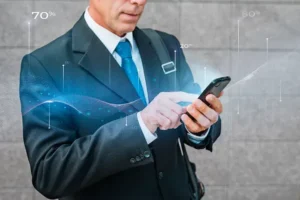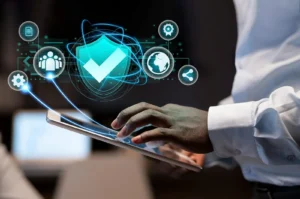The aspiration of this compilation is to present a comprehensive appreciation of the significance conveyed by in-store correspondence within retail, as well as its operational aspects and underlying reasons for being an essential aspect, especially amidst today’s circumstances. Each article in this collection will look into a specific facet of retail in-store communication, beginning with the basics and progressing to more specialist and technical topics.
- What exactly is in-store communication in the retail setting, and why is it important?
The numerous strategies and approaches used to communicate with customers inside a physical store are referred to as in-store communication in retail. Everything from the store layout to signage, advertising, product displays, and staff interactions is covered. The goal of in-store communication is to improve the consumer experience, increase sales, and foster relationships.In today’s competitive retail climate, in-store communication is more important than ever. With the development of e-commerce and internet purchasing, brick-and-mortar retailers must compete by providing a distinct and personalized experience.
- What role does in-store communication play in local LTE?
Local LTE networks, also known as private LTE networks, are increasingly being deployed in retail settings to improve in-store connectivity. These networks can enable high-speed connectivity, allowing personnel, consumers, and devices to communicate in real time. Local LTE, for example, could be used by a business to provide mobile point-of-sale devices, real-time inventory tracking, and targeted marketing messaging. In-store communication is crucial for the development of local LTE networks in retail since it ensures that employees and customers may use these technologies to improve the shopping experience.
- What is the role of mobile devices in in-store communication?
Smartphones and tablets, in particular, have become increasingly significant in in-store communication. Retailers can use mobile devices to provide customers with real-time information about products, promotions, and inventory. They can also employ mobile devices to enable mobile payments and to provide customised suggestions to customers based on their purchasing history. Staff can also use mobile devices to interact with one another, enhancing collaboration and efficiency.
- What is the mechanism behind retail in-store communication?
The process behind retail in-store communication is multifaceted and can comprise a range of tactics. One of the most significant is the store layout, which impacts traffic flow and product and display positioning. Signage, advertising, product displays, and staff interactions are some of the other approaches. Music, lighting, and aroma are frequently used in-store communication to appeal to the customer’s senses. The purpose of these mechanisms is to provide the customer with a unified and memorable experience, which can lead to higher sales and customer loyalty.
- How do retailers assess the efficacy of their in-store communication strategies?
Retailers can assess the effectiveness of their in-store communication strategy in a variety of ways. Tracking sales and customer feedback is a frequent practice. Retailers can also collect feedback on the shopping experience through customer surveys or focus groups. They can also monitor foot traffic and evaluate customer behavior to find places where in-store communication might be improved.
- What are some of the challenges that retailers have when putting in-store communication initiatives in place?
Implementing effective in-store communication methods can be difficult for retailers, especially in this day and age when technology is continuously changing. Integrating new technology with current systems and processes is a significant task. Another problem is establishing consistency across several retail locations and that all employees are appropriately educated. When introducing new technology like as mobile beacons or location tracking, retailers must also consider customer privacy concerns. Finally, assessing the return on investment (ROI) for in-store communication methods, which can be difficult to quantify, is a difficulty.
In conclusion, in-store communication is an important component of the retail experience that includes a variety of methods and approaches aimed at improving the customer experience, generating sales, and creating connections. The introduction of local LTE networks and mobile devices has improved merchants’ ability to communicate with customers in real-time, and the mechanisms underlying in-store communication, such as shop architecture, signage, and sensory aspects, strive to provide a coherent and memorable experience. However, deploying successful in-store communication strategies involves a number of problems, ranging from integrating new technologies to ensuring uniformity across numerous locations and calculating ROI. Despite these challenges, merchants who prioritize in-store communication are better positioned to compete in a quickly changing retail landscape and fulfill the demands of today’s customers.




